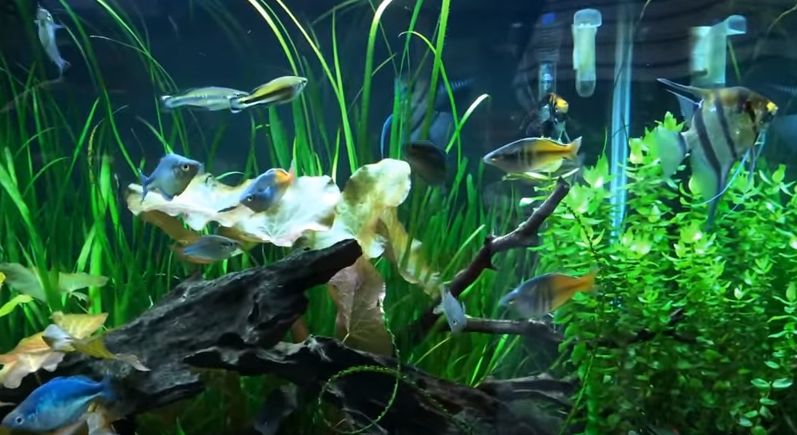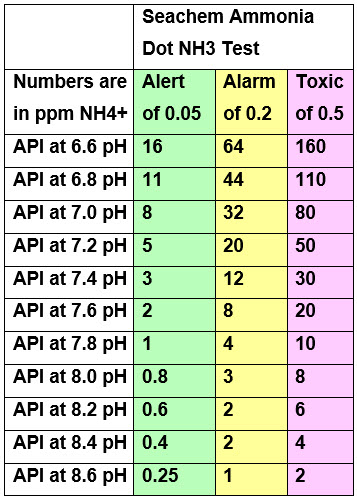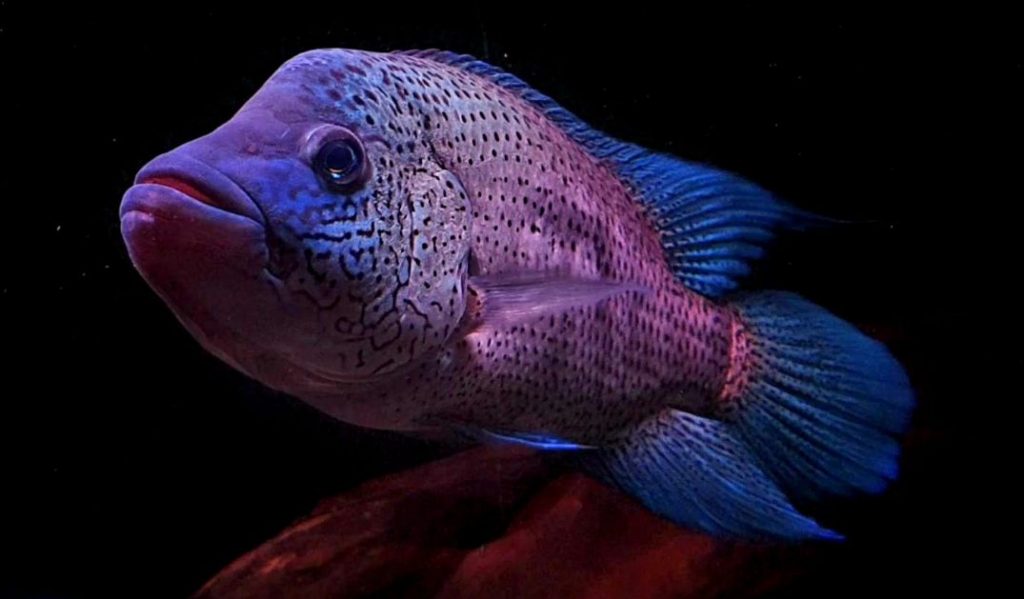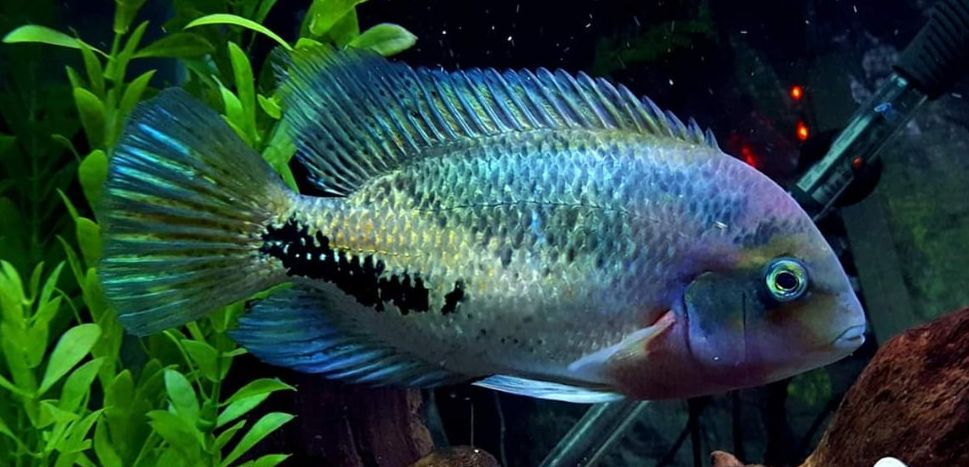
Chloramine (generally monochloramine NH2Cl) is a combination of chlorine and ammonia used in many municipal tap water suppliers to remove bacteria from the water. The molecular weight of NH2Cl is 51.5. The molecular weight of NH2 is 16. So the amount of chloramine is roughly three times (51.5/16) the amount of ammonia measured.
If you put a thiosulfate product (or any other chloramine neutralizing product!) into the chloramine water, it removes the chlorine and leaves the ammonia. If chloramine concentration of 0.5 to 4 ppm is neutralized (the concentration used for water sanitation), then roughly 0.2 to 1.3 ppm of ammonia will remain in the water.
Note that NONE of the conditioners used for aquariums even temporarily “detoxify” ammonia. NONE, not even Seachem Prime. More can be found on this topic in this article:
5.5.3. Conditioners
This level of ammonia is only a problem in aquariums with a pH over 8.5. The “alarm” level below is where one needs to become concerned:

Here are several articles going into this topic in depth:
5.2. Safe Ammonia Levels in the Aquarium
Note that most aquarium article authors use the term “ammonia” to refer both to the gas ammonia (NH3 which is poisonous) and the ion ammonium (NH4+ which has relatively low toxicity) because the aquarium test kits measure both when they measure “ammonia”. This presents a problem as much more “ammonia” is present as the poisonous gas NH3 in high pH’s. So, if you have a high pH aquarium be far more careful with the ammonia from chloramine.
If one has 1 ppm of chloramine and a pH lower than 8.5, don’t worry about the ammonia from chloramine, any decent biological filter will handle it if the chlorine has been neutralized.

Lately many people have been reporting 4 to 8 ppm of ammonia straight out of the tap. It appears there has been a change in the way water utilities are killing the biofilm which forms in water lines. This is a level of 12 to 24 ppm of chloramine, which is VERY high.
There have been several people coming on social media complaining that their fish died from ammonia poisoning because their tap water is measuring 4 ppm ammonia. It is not the ammonia that killed their fish, it is the chlorine in the chloramine which is present in a level of 8 ppm. Commercial conditioners used per the directions only remove 1 to 2 ppm of chlorine.
So if one has 1, 2, 4 or 8 pm ammonia in ones tap water one needs to get a total chlorine test kit and add conditioner to the change water in large quantities till the total chlorine test kit is measuring zero. Then and only then begin to worry about the ammonia.

Garbage Can Water Conditioning
If your pH is high, this remaining ammonia from neutralized chloramine needs to be neutralized by Mother Nature (chemicals such as Seachem Prime simply don’t work and are a waste of money). This can be done by doing something called “garbage can water conditioning”.
If one has high ammonia coming out of the tap with a high pH use a greater than 24 hour residence time in a water conditioning container (like a plastic tote, pail or garbage bin) with a functioning biofilter to remove the ammonia.
To do this take a plastic tote, pail or garbage bin and fill it full of the water. If you have a fifty gallon tank and you do a 50% water change that is 25 gallons. So you will need at least a 25 gallon bin or can. Add sufficient conditioner to remove the chlorine from the chloramine. Add a sponge filter, a considerable amount of food, some inoculate (brown gunk from an established filter, black soil or compost from the garden store) and just leave it to cycle, adding large amounts of food every day.
When the bin, tote, can or pail is well cycled in four to six weeks, do a 90% to 100% water change and again fill it with water. Add sufficient conditioner to remove the chlorine from the chloramine. Do nothing to the sponge filter(s). After that only add very small quantities of food once a week to the bin or pail. You do not want to build up nitrates and beneficial bacteria live for years with no food.
This bin or pail will now remove the ammonia from water in 24 hours quite reliably. There will be enough bacteria and gunk in the sponge to handle any amount of ammonia the municipal water authority can throw at it. Simply put your water change water in the container when you do a water change. Add conditioner. If you do a water change once a week this will give the filter in the “garbage can” container one week to remove the ammonia. One week is plenty of time to remove the ammonia.

“Snake Oil” Chemical Ammonia Neutralizers
Many manufacturers of chloramine “neutralizing” or “detoxifying” products claim to remove the ammonia left after chlorine neutralization, Seachem Prime being the most used. Products such as Prime do remove and neutralize the chlorine. They decidedly DO NOT “temporarily detoxify” the ammonia. That is pure marketing hype with no basis in science as proven by thorough testing.
The conditioner removes the chlorine and only the chlorine from the chloramine, leaving ammonia. Then your aquarium bio-filter will remove the ammonia over a period of one to two days. It is not the “detoxifier” removing the ammonia, it is simply Mother Nature and your filter.
Remember, chlorine is 100 to 1000 times more toxic than ammonia, so getting rid of the chlorine is much more important than the ammonia removal. It is a fact that very little harm will come from ignoring the ammonia in chloramine (unless one has a pH over 8.0).

For those interested in reading more about this subject click on this link:
5.5.3.1.Ammonia “Neutralizers” or “Detoxifiers”
Seachem is probably the biggest snake oil salesman with their huge push on the “ammonia detoxifying capabilities” of the Prime water conditioner. All their claims for this product beyond chlorine removal are pure marketing hype. For more on this go to this link:
5.5.3.2. Prime and Safe Marketing Claims.
.
Return to Water Parameters Menu
.
Aquarium Science Website
The chapters shown below or on the right side in maroon lead to close to 400 articles on all aspects of keeping a freshwater aquarium. These articles have NO links to profit making sites and are thus unbiased in their recommendations, unlike all the for-profit sites you will find with Google. Bookmark and browse!
.

Dave says
In reply to Sheila … You have been told wrong. With well water you need nothing. And I mean NOTHING!! Prime is especially useless. Fritzyme 7 bacteria is also useless.
Sheila edmonds says
I have well water with PH 7. Do I need a water conditioner ? I was told by various groups that i need a conditioner to kill the bad stuff in water, recommending prime ? How do i know what to use if so? I have been using prime 7 for bacteria also for water changes. Ive read this article and wondering do i need it or is there another way? This article is VERY helpful!
Dave says
In reply to Ben Z … My math was off a little bit. The multiplier is three. The molecular weight of NH2Cl is 51.5. The molecular weight of NH2 is 16. So the amount of chloramine is roughly three times (51.5/16) the amount of ammonia measured.
Ben Z says
Hi Dave,
You wrote: Lately many people have been reporting 4 to 8 ppm of ammonia straight out of the tap. It appears there has been a change in the way water utilities are killing the biofilm which forms in water lines. This is a level of 11 to 20 ppm of chloramine, which is VERY high
I don’t quite get how the chloramine numbers are inferred from the ammonia levels; the ratios in this paragraph and the next don’t seem to match exactly. Could you tell us more about the chemical processes involved?